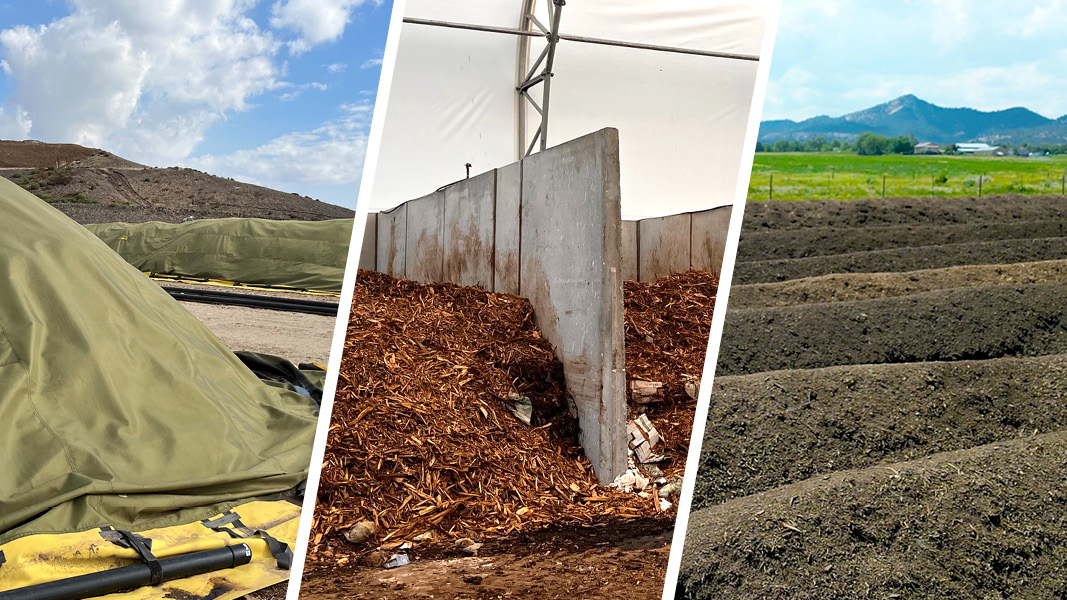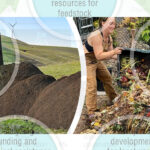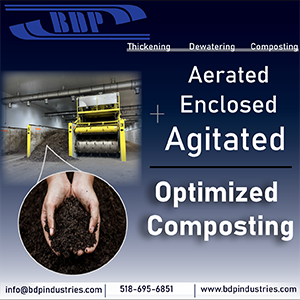Top: Sampling of composting facilities in the U.S. Photos courtesy Sustainable Generation (left), Engineered Compost Systems (center) and Table To Farm Compost (right).
The US Composting Council (USCC) reported the results of a Compost Throughput and Environmental Impact Survey conducted between December 2024 and May 2025 that collected 2023 data. The previous survey was done in 2020, and released in 2021. “This industry-wide survey estimated the environmental impact of USCC member compost producers, and reveals how that impact has grown in the three years since the previous 2020 survey,” said USCC Executive Director Frank Franciosi. “As testament to the growing strength of the industry, member compost producers took in 5,513,600 more tons of organic feedstock in 2023 compared to 2020.” Of the 730 USCC members who received the survey, 142 responded, yielding a 20% return rate that represents more than 263 composting facilities across 40 states. The survey data was used to calculate greenhouse gas avoidance, carbon sequestration, and fertilizer value. States with no representation in the survey include Alabama, Alaska, Delaware, Hawaii, Louisiana, Mississippi, Nevada, New Hampshire, New Mexico, and North Dakota.
In all, survey respondents reported processing a total of 14,379,113 tons of organic feedstock in 2023. Sources were households, commercial food distribution, restaurants, wastewater treatment plants, and other (e.g., yard trimmings, industrial organics, or unspecified). The largest percentage of organic feedstocks came from households, at 31.14% of all feedstocks processed, accepted by 141 composting facilities. The types of feedstocks recorded include: yard trimmings, biosolids, food waste, agricultural and forestry byproducts, crop residues, and compostable food serviceware and packaging.
Facilities collectively reported producing 6,002,260 tons of finished compost in 2023, compared to a reported 5,159,986 tons in 2021. Finished compost was used in agriculture, commercial horticulture, home gardens (through direct to public retail), turfgrass management, erosion control, and other unspecified means. Through the application of compost produced by USCC members, an estimated 522,538 US tons of carbon dioxide equivalents were sequestered in soil in 2023, equivalent to USD $22,753,847 in carbon dioxide value, according to USCC. The Environmental Protection Agency’s Waste Reduction Model equates this number to the carbon dioxide sequestration impact of preserving 2,832 acres of forested land and of avoiding driving over 1.2 billion miles in a passenger vehicle.














